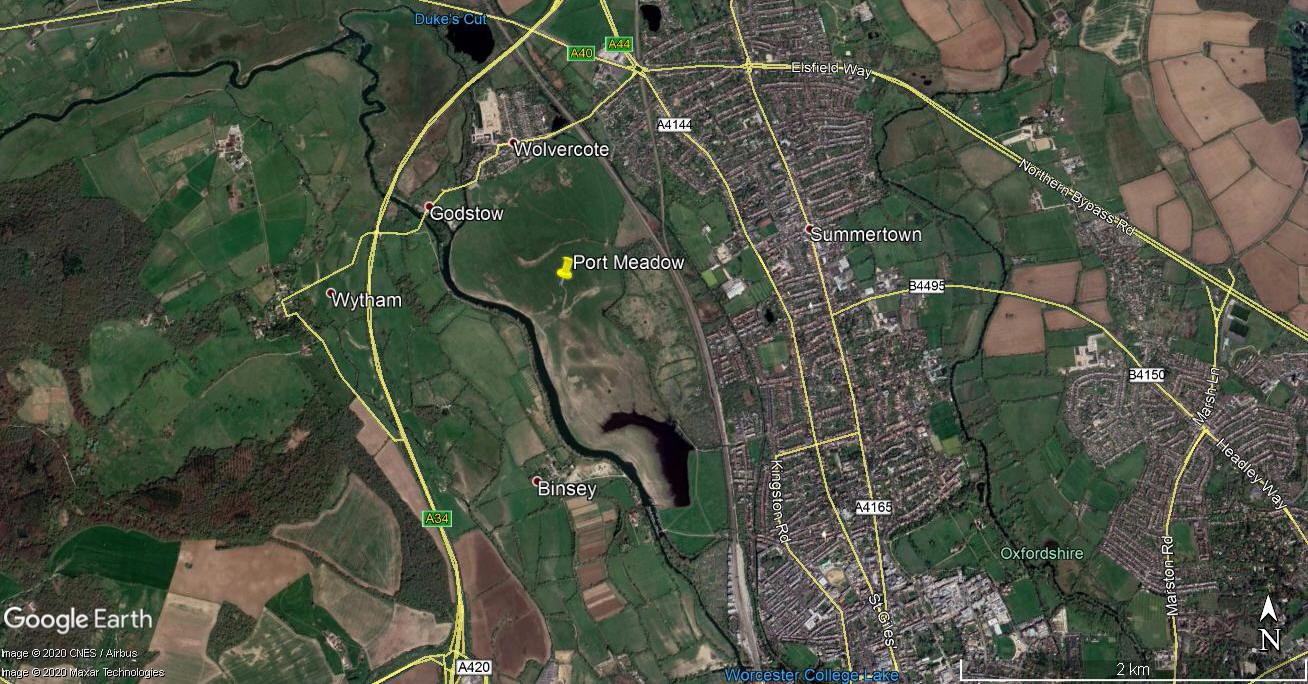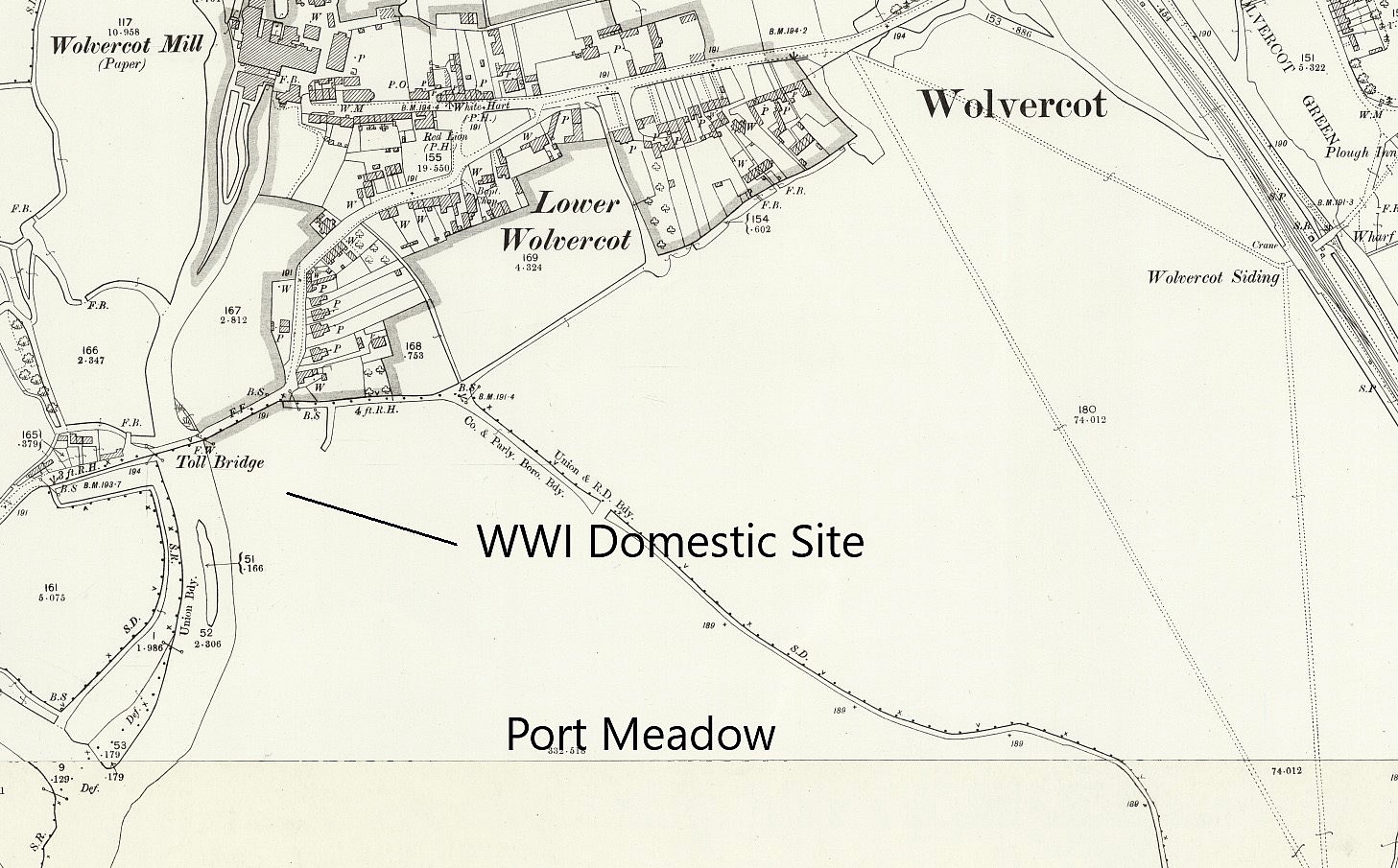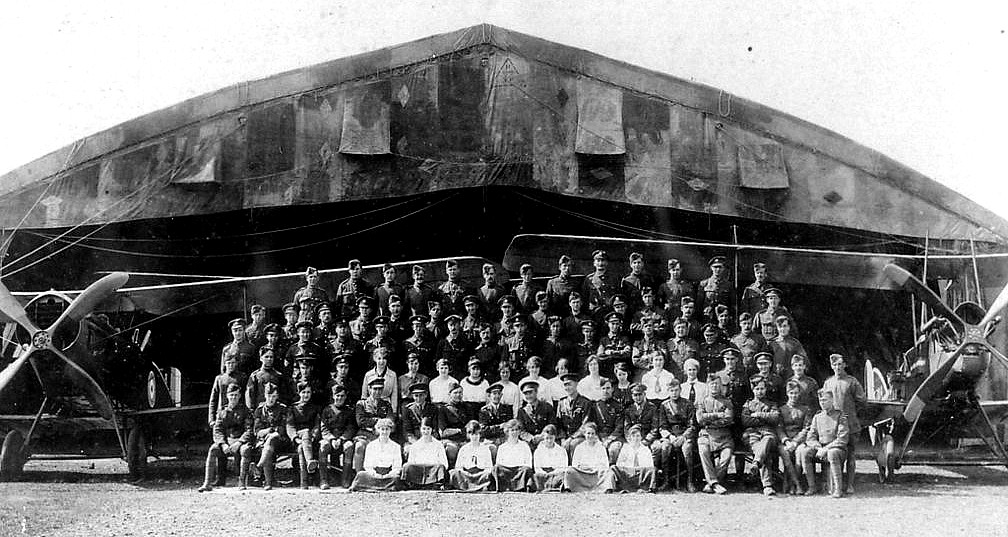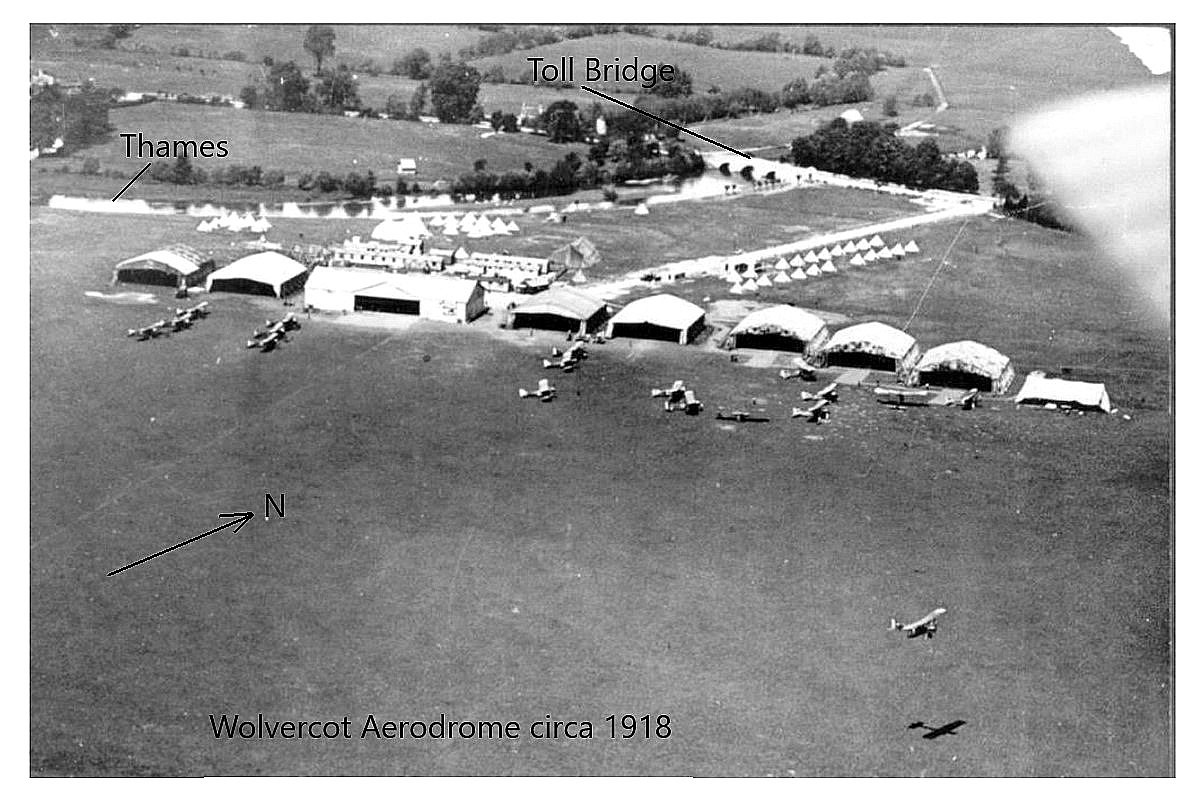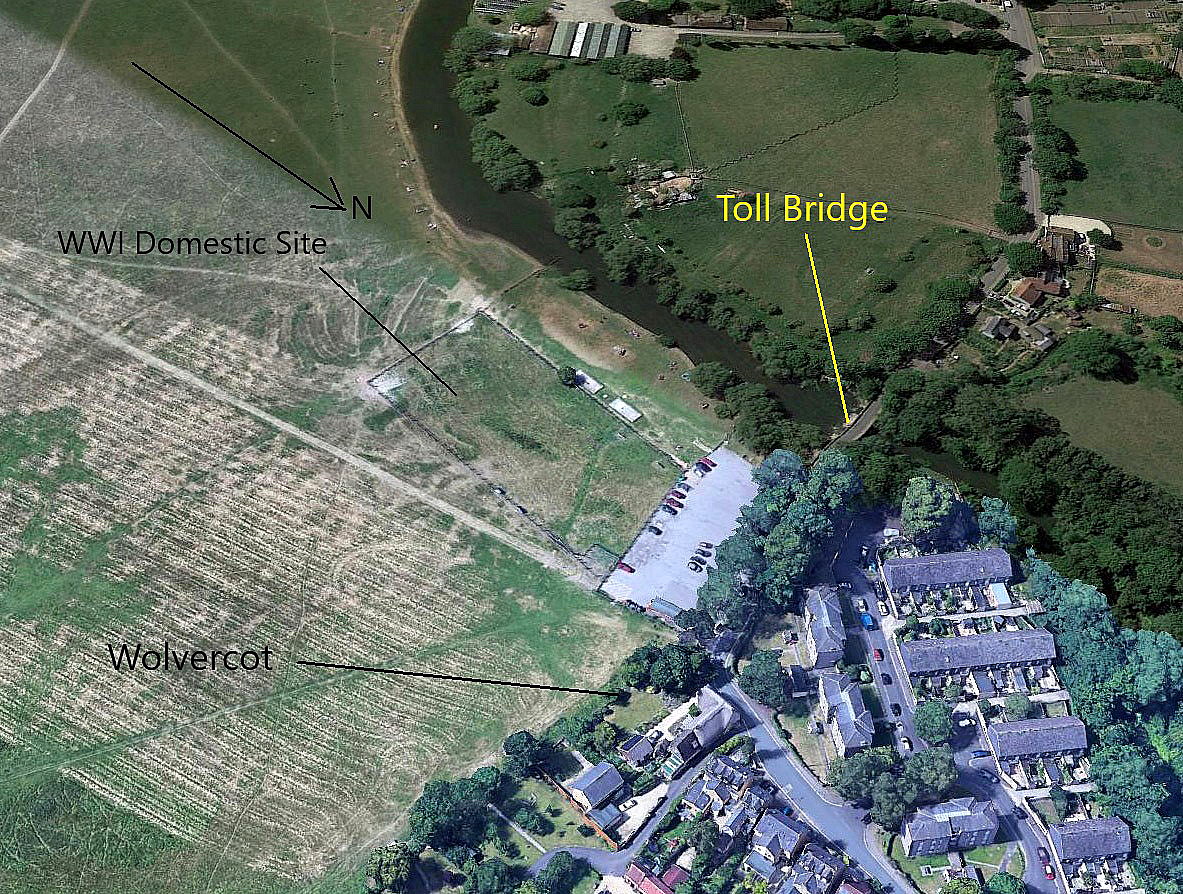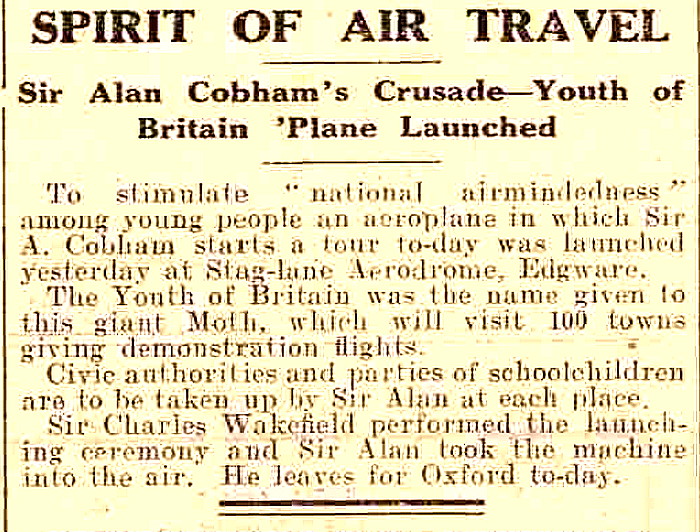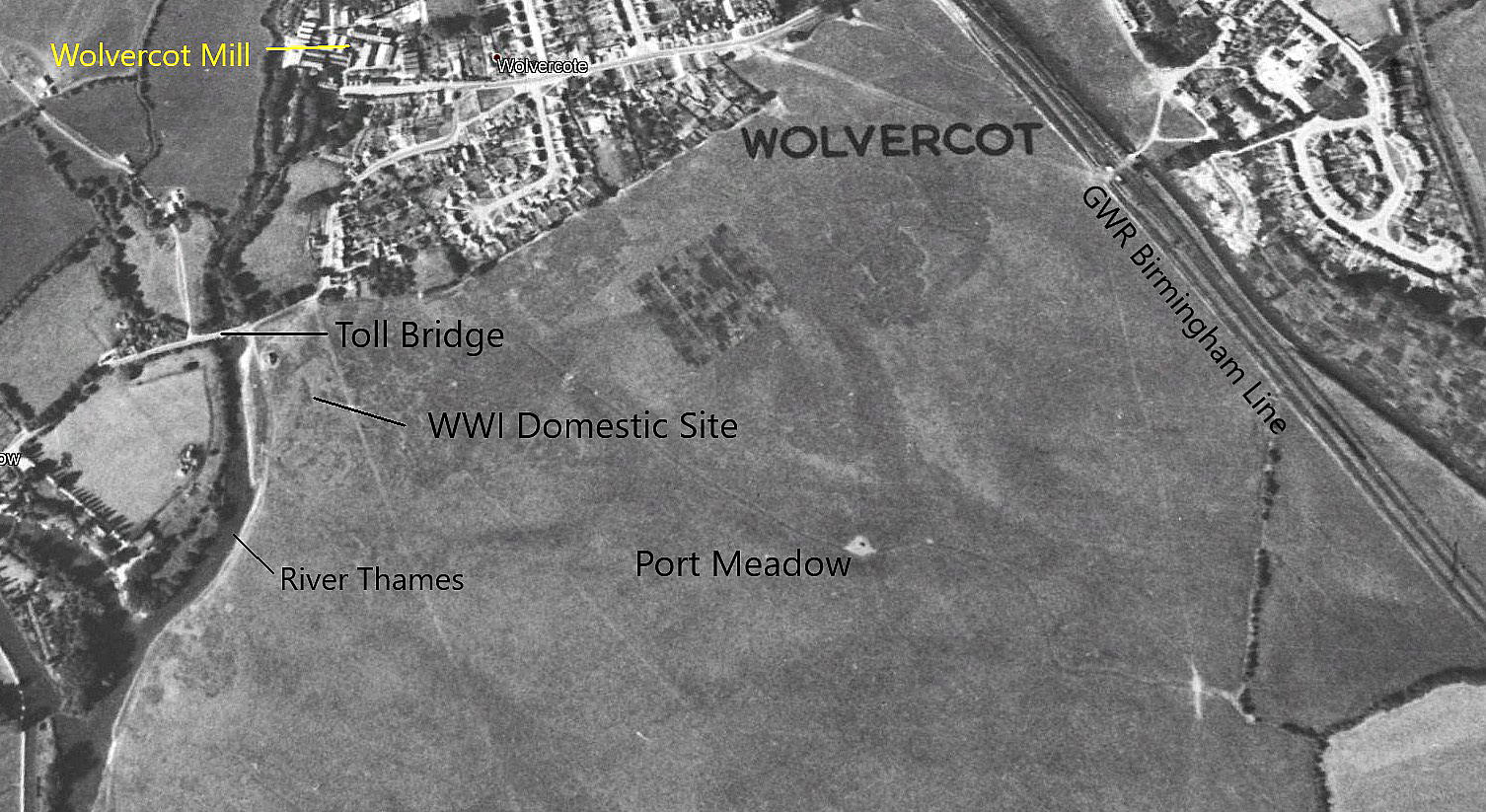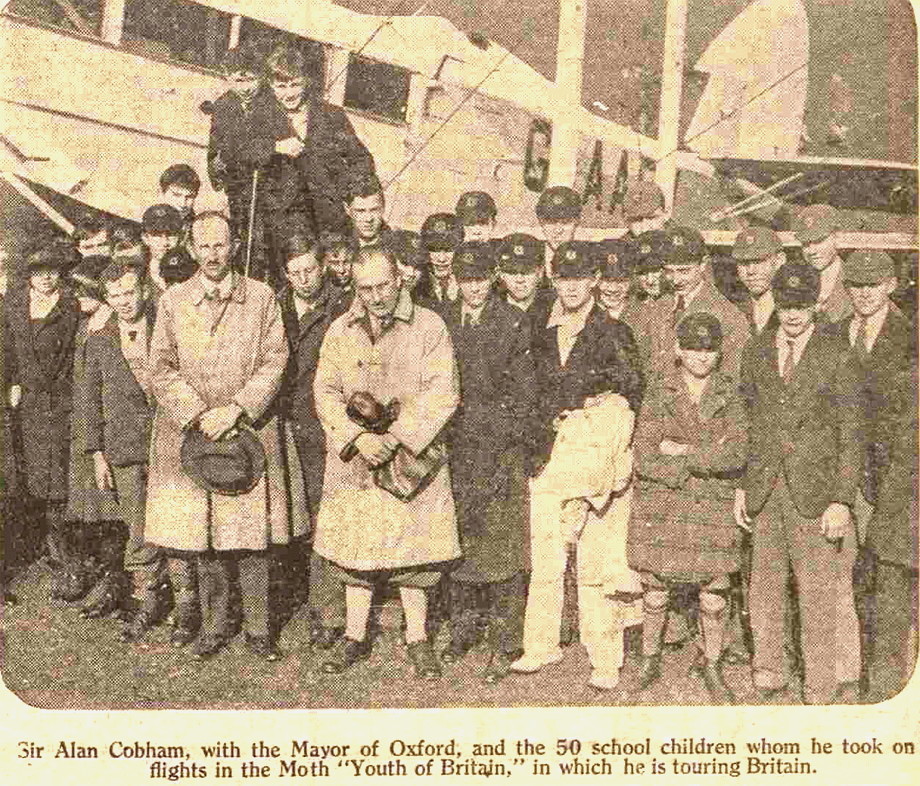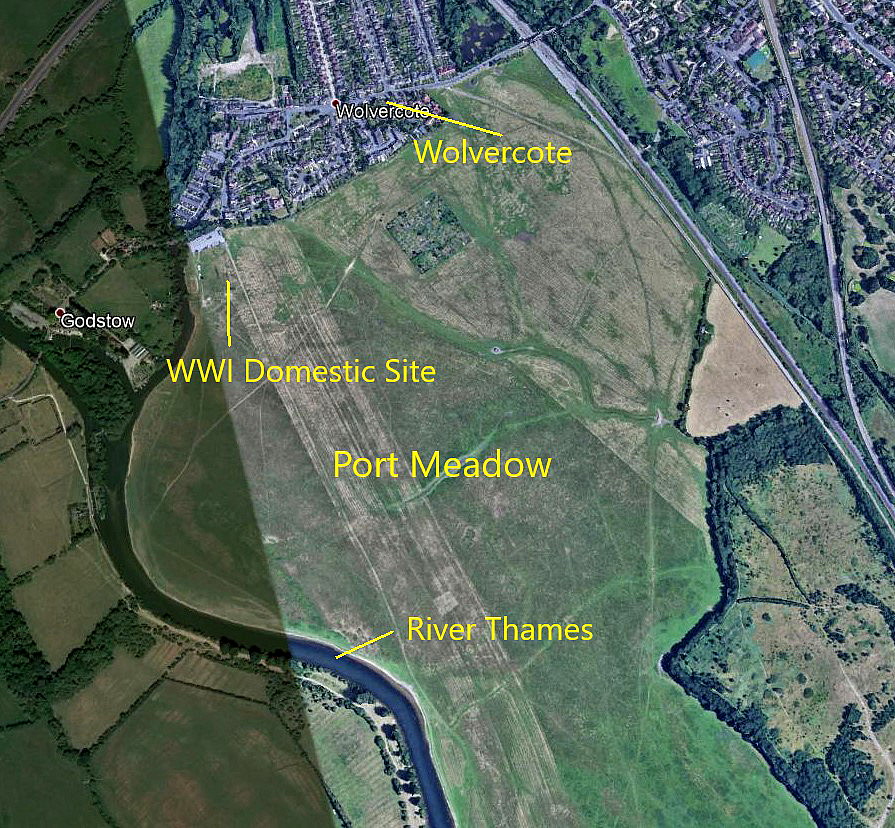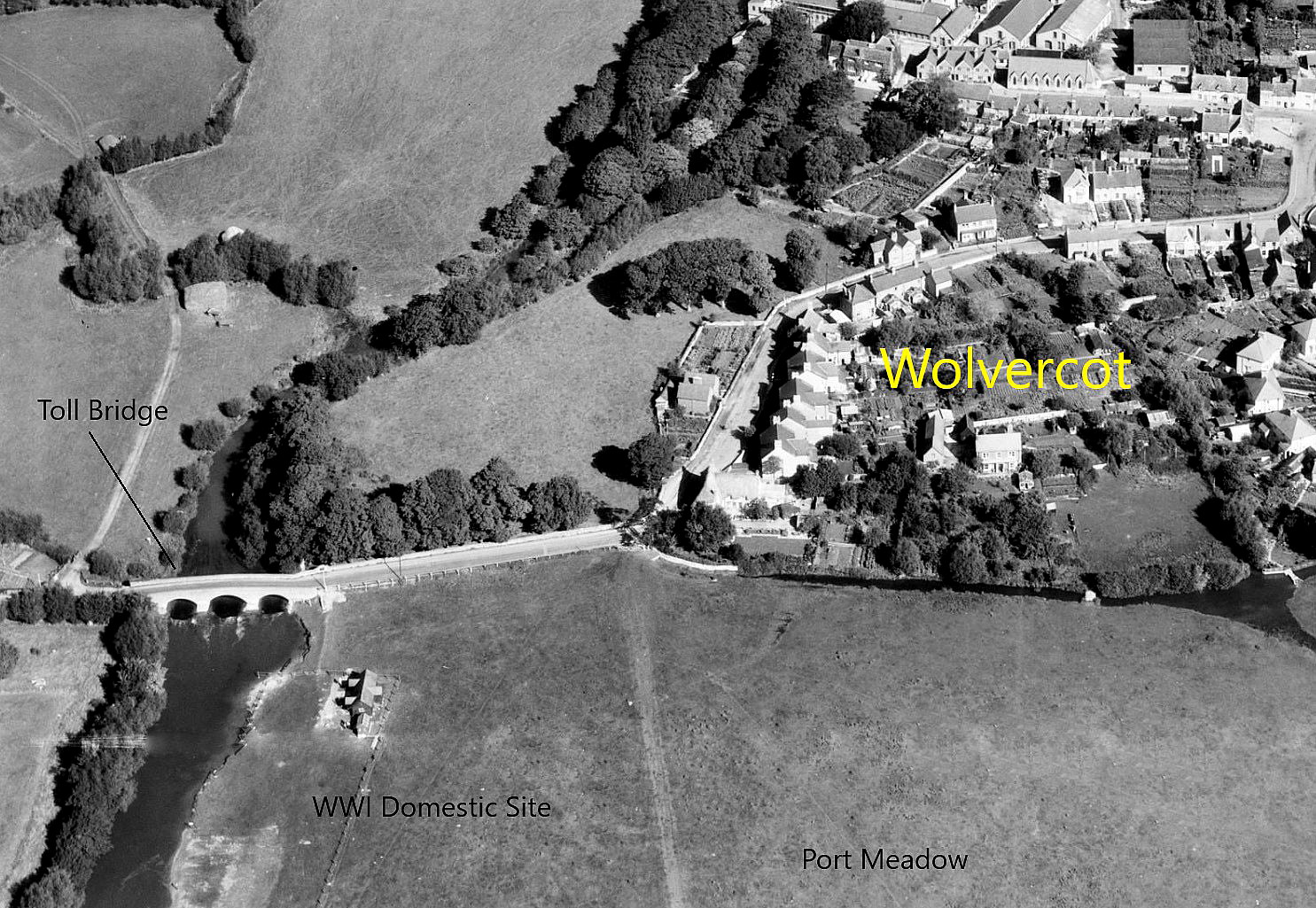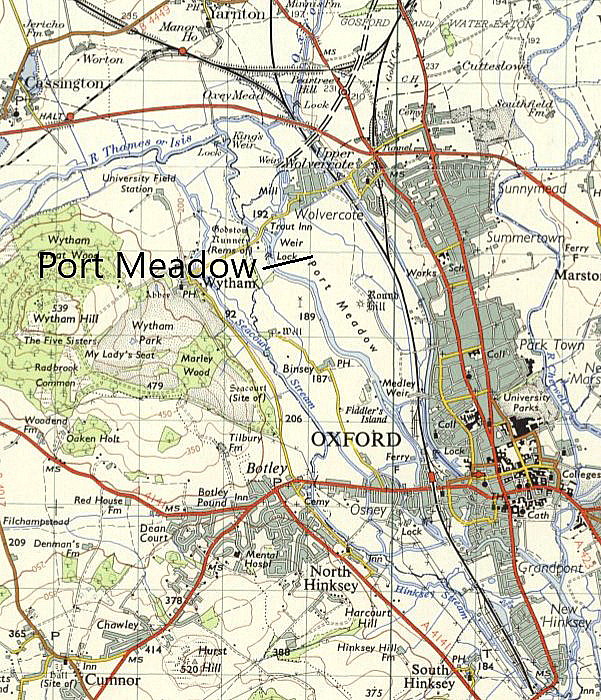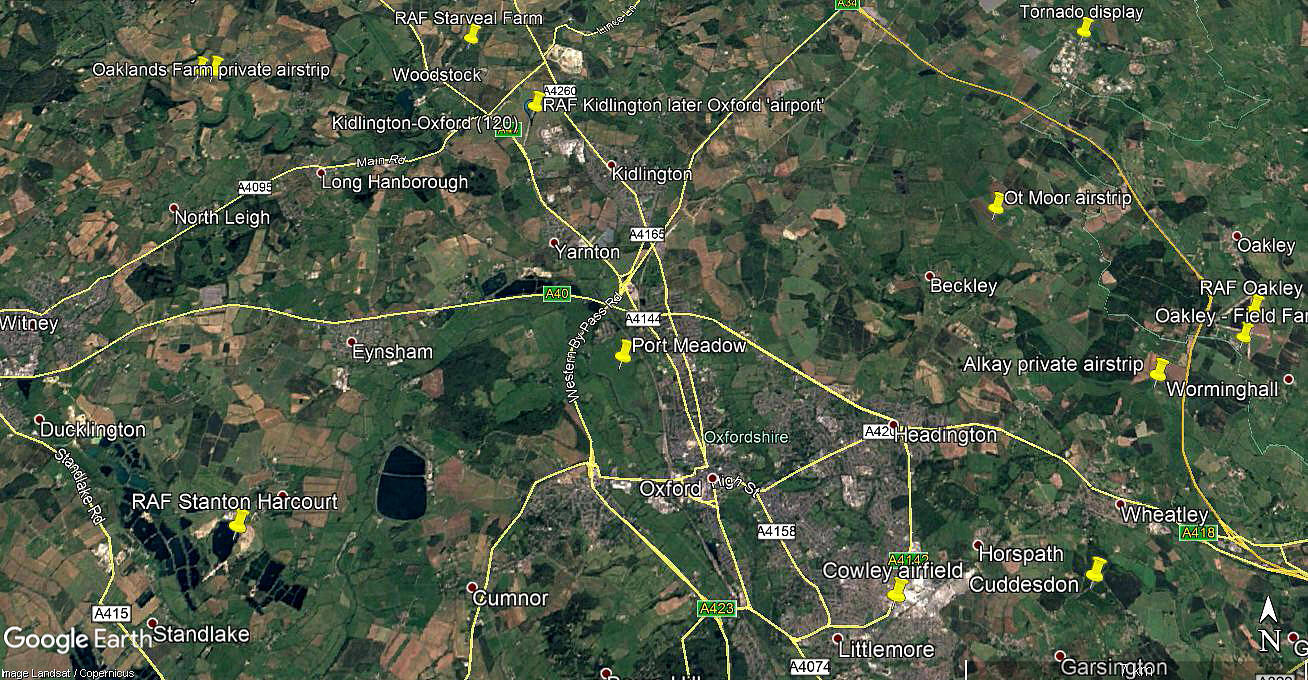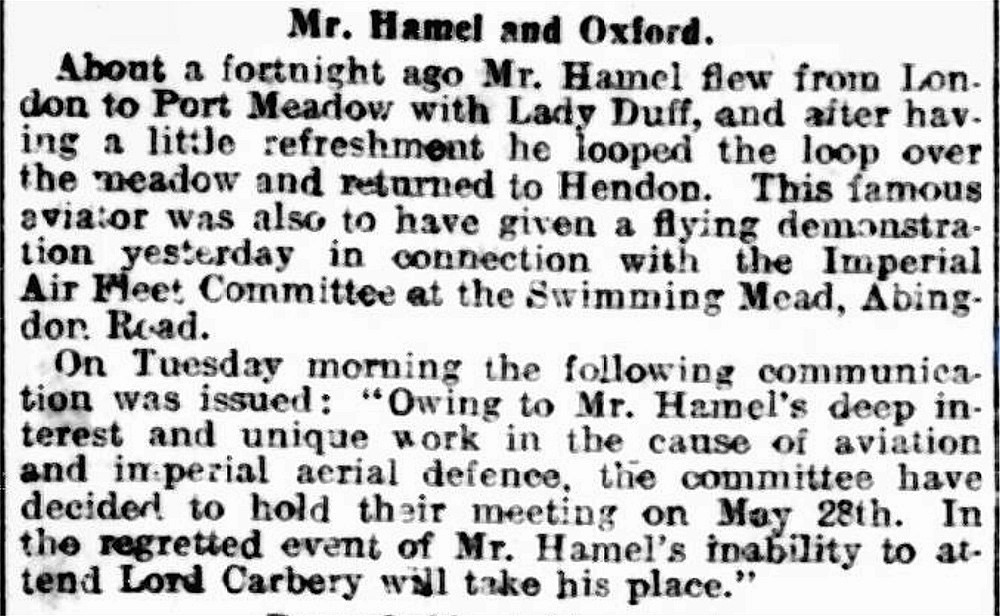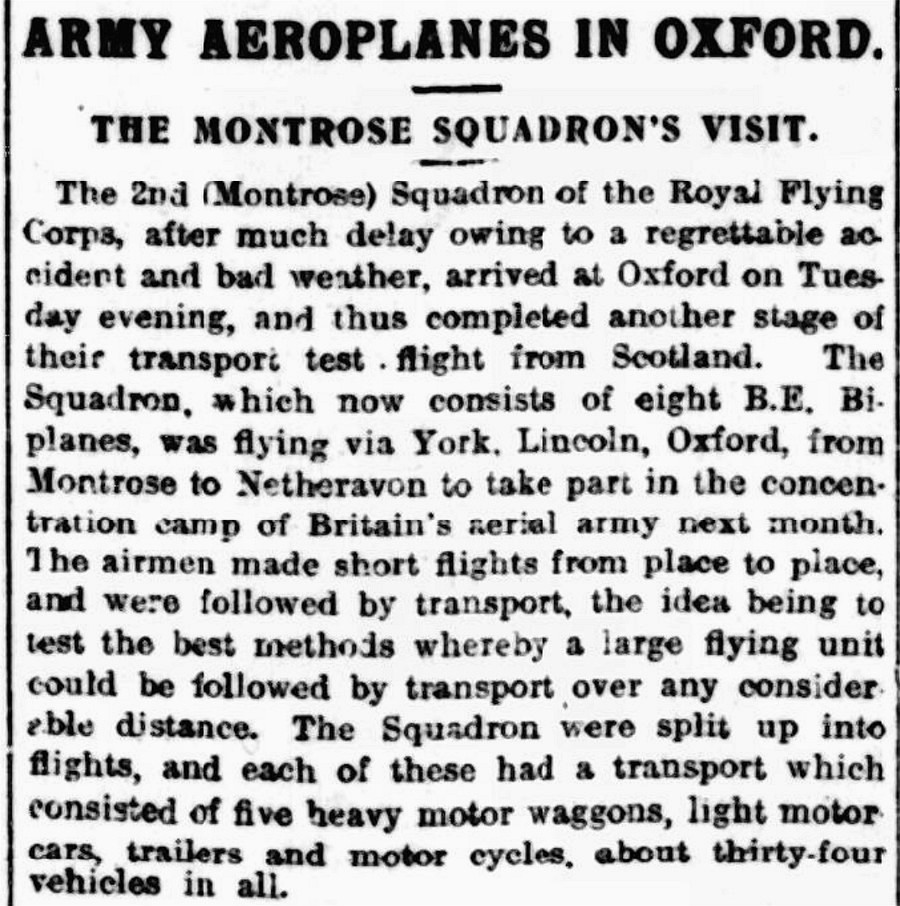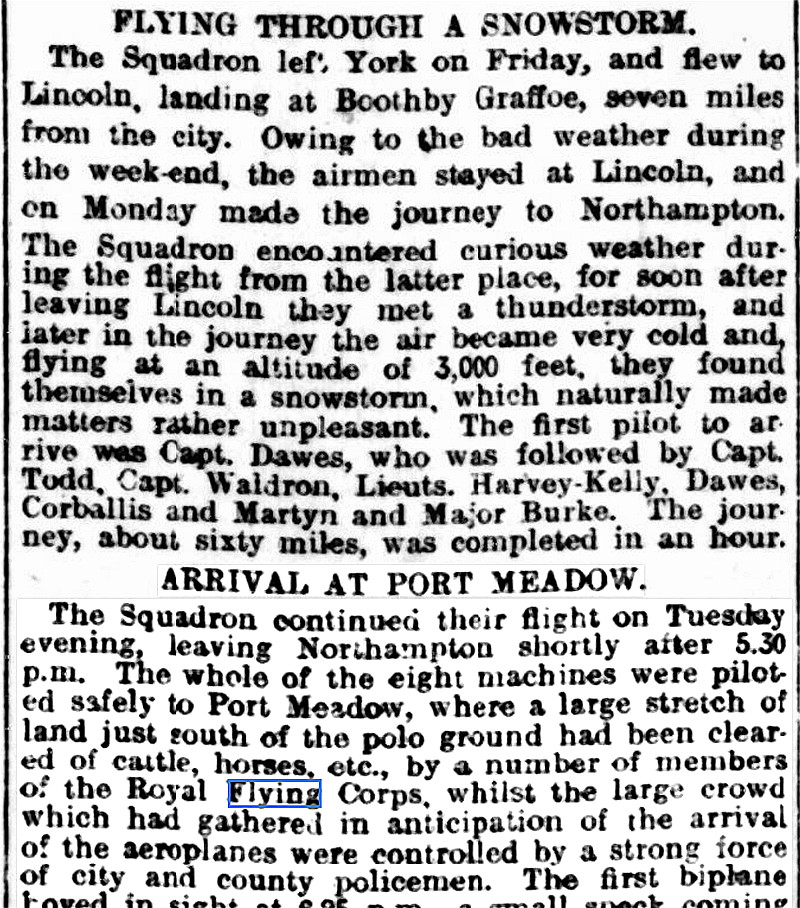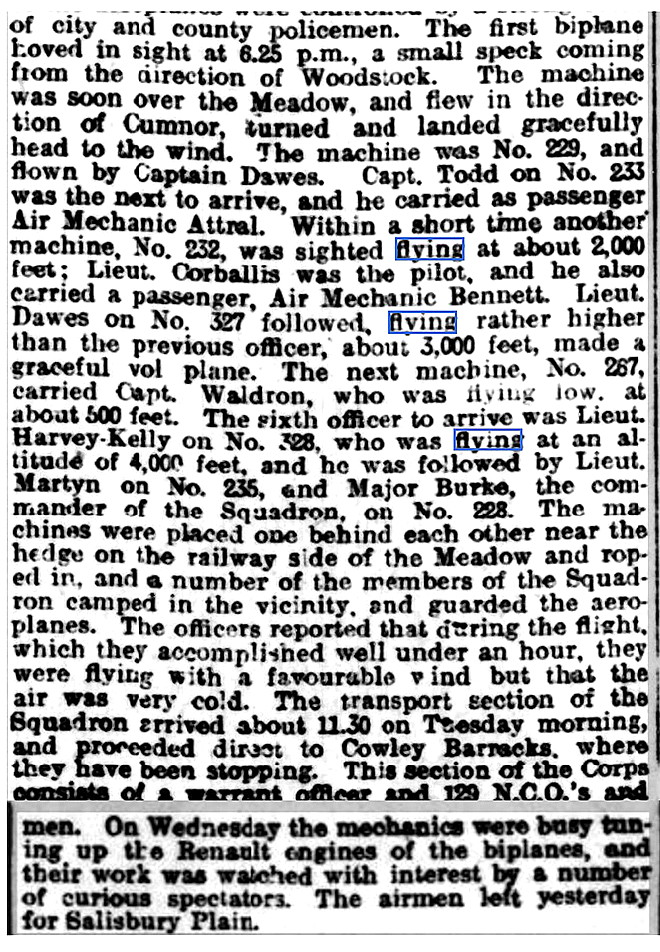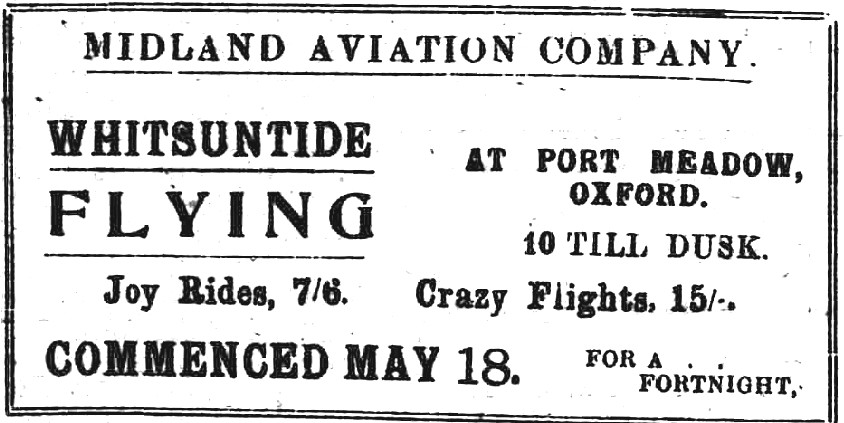Port Meadow
PORT MEADOW: Civil unofficial Landing Ground initially, then ‘official’ aerodrome. Later, in WW1, military aerodrome later returning to civil use - perhaps intermittently?
Notes: This picture was obtained from Google Earth ©
Military users: WW1: RFC/RAF Training Squadron Station and Training Depot Station 1916 to 1919
Night Landing Ground for 78 (Home Defence) Sqdn 1916 to 1917
Note: Initially this squadron flew the Royal Aircraft Factory B.E.2 and B.E.12 types. These were, it seems, replaced by Sopwith 1½ Strutters in 1917, so perhaps this type made an appearance here?
Location: Port Meadows still exists today as a large open space S of Wolvercote, just E of the A34 and the River Thames about 2nm NW of Oxford city centre
Period of operation: 1911 to 1931?
Site area: WW1: 260 acres 2103 x 503
NOTES: There exist records that say, “....the Army scheduled tests for the ground for 14th June 1911, but the 50hp Gnome powered Henri Farman biplane, (serial F1), earmarked for the task could not cope with the strong winds, finally landing at Bessels Leigh polo ground five miles to the south west of PORT MEADOWS". Here again history seems to have been very unfairly selective as to the input by Maurice Farman, brother of Henri Farman, (sons of an English journalist living in Paris), when it comes to the Farman name in early aviation history.
It’s probably best that I quote directly at length from ‘Wings Across the Border’ by Derrick Pratt and Mike Grant, (as is the quote for ‘Location’ listed above). The use of ‘capital’ letters for aerodrome sites and ‘bold’ for Counties is my device included to emphasise the place where these events took place. “PORT MEADOW was one of those broad open spaces that, in an era of very tentative, literally ‘short-haul’ cross-country flying, had been pencilled in by early aviators as a suitable landing ground, whether permission had been given or not."
"Hubert Latham, pilot/designer for the Antoinette Company, was probably the first to land an aircraft here, in an Antoinette IV on 19 May 1911 after a flight from BROOKLANDS”.
They go on to say, “By November 1911 the Imperial Aero Club were on site. It lost fifteen aircraft, valued at over £8,000 when its aircraft shed was demolished in the first of the winter’s gales. Private flying from PORT MEADOW suffered a further blow when, on 5 August 1913, five aircraft were destroyed by fire, thus paving the way for the military to move in”.
MAKING A DISTINCTION
What they say afterwards illustrates very well what often confused me when starting this research looking at aviation history from my ‘modern’ perspective where, generally speaking, military and civil aerodromes are very clearly divided and generally speaking special permission needs to be obtained for a civilian light aircraft to visit a military site. In those days and probably up to WW2 there seems to have been little or no distinction between most if not all military and civilian aerodromes and both factions were free to use each others facilities.
It seems to have been largely a ‘class’ issue. In those days most pilots came from the ‘upper classes’ and shared a common social experience by and large. They were educated at public schools and attended the same limited choice of universities. Most pilots in those days probably knew each other socially or at least knew a friend of a friend. This still remains the case today to some extent for those seeking senior positions in both government and military posts.
SOME MORE HISTORY
Getting back to ‘Wings Across the Borders’, “Army and Naval aircraft had used the field throughout, and during the September 1913 manoeuvres 3 Sqadron, (based at NETHERAVON), were based here with its motley collection of Farman F20s and Blériot XIs. PORT MEADOW was also used for general military training as well as an airfield – Army’s Beta 11airship called there on Easter Monday, 24 March 1913. For aviation purposes the field was taken under the aegis of 21 (Training) Wing established at Cirencester in August 1916.
The first wartime unit to arrive on site was 40 Reserve Squadron, raised at NORTHOLT in July 1916 and flying in to PORT MEADOW on 21 August 1916. On 31 May 1917 all Reserve Squadrons were designated Training Squadrons (TS). On 1 June 1917 No.17 TS flew in from WADDON (Croydon) but did not stay long, moving on to YATESBURY (WILTSHIRE), on 8 October. They were replaced on 10 October by No.1 TS from NARBOROUGH. The latter, along with 40 TS, took their Sopwith Camels and Pups to BEAULIEU in January 1918. On 16 December 1917 35 TS was posted in from NORTHOLT. Also in December 1917 34 TS arrived from CASTLE BROMWICH, followed by 71 TS from NETHERAVON on 30 March 1918”.
It appears that in late 1918 there were seventy aircraft here supported by 800 personnel. The aircraft were, it seems, housed in eleven canvas hangars, presumably of the Bessoneau type (?), with up to six aircraft in each. Just a very minor point, but using my 'Guaranteed 12 inch metric converter calculater', 11 x 6 = 66. Which of course is not quite seventy. Be that as it may, this was a major RFC Training Station.
LAME DUCKS
“As a relief landing ground PORT MEADOW received numerous lame ducks but none as spectacular as the giant Handley Page 0/400 bomber , (serial D5401), piloted by Lt. Shaw which dropped in on 19 April 1918. Its twin 375 h.p. Eagle VIII engines were having fuel injection problems on the delivery flight from the builders in Birmingham, (which aerodrome did this aircraft depart from I wonder?), to LYMPNE. This took a remarkable nine days, with enforced stops at UPPER HEYFORD and FARNBOROUGH to try and clear the problem.
The RAF had relinquished PORT MEADOW by 18 Febuarary 1919 but the area continued to be used spasmodically in emergencies. Thus on 4 August 1926 one notes a Gloster Grebe II (J7572) of 25 Squadron (HAWKINGE), suffering engine failure on take-off after an earlier forced landing, landing heavily again and overturning in one of the drainage ditches”…killing the pilot, 2/Lt Edward Hotchkiss.
NOT A CLUE
I have selected this airfield to give a detailed account pretty much at random, on a whim really, but also because the main history wasn’t too long winded. When starting the research for this Guide I hadn’t heard of PORT MEADOW. Over a few years of research I’d got wind of it but didn’t accord it too much attention. I logged it, and tried to determine a location. And that was that for quite a while, in other words for several years. Then suddenly it exploded into detail in ‘Wings Across the Borders’. I now regard PORT MEADOW as a major flying site with a lot of history attached.
A MICHAEL T HOLDER GALLERY
My note: Regarding the group picture the aircraft on the left is certainly a Bristol F2B Fighter. The one on the right probably a Royal Aircraft Factory BE.2 variant?
My note: The third picture of Cobham at PORT MEADOW was published in the Derby Daily Telegraph on the 17th May 1929.
A LATER ADDITION
In April 2025, Mike found these items, all published in the Oxford Chronicle and Reading Gazette on the 29th May 1914. If nothing else Article Two shows that the British Army were, at last, taking considerable interest in the use of aircraft for reconnaissance during major battles. Something the Royal Navy had been doing for some two years or more by then.
1929: SIR ALAN COBHAM ARRIVES
Oxford (PORT MEADOW) was the first venue, on the 15th May, for Sir Alan Cobham's Municipal Aerodrome Campaign of most of the mainland of the U.K. Initially 107 venues were planned, but in the end he managed to visit about 95. Still a remarkable achievement of course. Mostly he used the ten-seater de Havilland DH61 'Giant Moth' G-AAEV, but, he did have a couple of serious 'prangs' along the way - needing major repairs.
As a general rule, after arriving, he would take the local 'worthies' flying, (dignitaries from the town mayor down), and invariably a slap up lunch in the town hall followed, when Cobham extolled the compelling need for aerodromes and regional airports. He then took typically forty to fifty school children for flights, the cost being met by an anonymous donor - which we now know was Lord Wakefield of Castrol Oil fame. G-AAEV was of course, named 'Youth of Britain'.
Then he embarked on fare-paying passenger flights, usually till dusk. Presumably to raise the funds needed to keep the Tour going. What we need to remember is that, although he did attend air-shows from time to time, as often as not he was landing in a convenient field. He had a small ground crew following him around to service the aeroplane, and supply fuel and oil.
FLYING CIRCUS VENUES
Start venue (?) for Aviation Tours 1931 UK tour of Britain (4th to 13th April). Or was this tour actually in 1930? Another report states it took place in 1930 although both reports agree on the April dates. It does seem certain that Aviation Tours used the Imperial Airways Handley Page W8 G-EBBI, principally if not solely for local pleasure flights. And, that aircraft arriving here must surely have produced quite a stir.
It is not known where this Tour started - but it might have been here? Only seventeen venues seem to have been identified so far? It appears the venues visited ranged from Penzance up to Inverness and the Tour ended in late September . If anybody can kindly offer advice this will be much appreciated.
A INTERESTING FOOTNOTE
In May 2021 Mike Holder unearthed this advert, published in The Oxford Chronicle on the 25th May 1923. Finding this does of course beg the question as to how often, (if at all?), other joy-ride operators may have used this location?
Charlie Newman
This comment was written on: 2017-07-23 09:50:21May I add to your excellent piece from a different angle? ie model aviation. The first Oxford Model Flying Club was set up and active on PORT MEADOW in 1913, with a notice in Flight in September of that year. Amongst its members were the pilot Frank Gooden, a resident of nearby Wolvercote, and Alex Houlburg, who later was the inaugural and long-time chairman of the national governing body for model flight, the Society of Model Aeronautical Engineers, now the British Model Flying Association. One of his best-known models was the Isis, a rubber-driven duration model with optional floats or wheels, that he flew off the river. Despite being covered in poles for anti-invasion defences, the Flight Cup was flown on PORT MEADOW and a Wellington successfully force-landed between the poles.....The present Oxford Model Flying was created in 1969 and is still very active. Incidentally, the early club was very much 'gown'. If you not considered of that persuasion, then one joined the 'town' Oxford Meteors!. About ten years ago during a hot, dry summer, we used a model with a 35mm camera mounted and took some interesting shots of the clear marks left by the RAF buildings even though most of them were canvas Bessoneau hangars.
Reply from Dick Flute:
Hi Charlie, Many thanks indeed for this excellent additional information which I will keep posted. Best regards, Dick
Garth Lewis
This comment was written on: 2019-02-28 11:07:44Hi. I have in my possession an early 20th c. guide book for Godstow and surrounding area which was published by Henry Taunt the well-known Oxford photographer. Whilst of great interest in itself, I am particularly fascinated by a pencilled inscription on the fly leaf which reads - "J.C. Rundle, 71 Squadron R.F.C. Port Meadow, Oxford". My research to date suggests that 71 Sqd. was in fact raised in Australia as 4 Sqd. Australian Flying Corps and this suggests that Rundle may well have been an Australian far from home who felt the need for some local knowledge!
Peter Smith
This comment was written on: 2019-07-26 13:00:06Hi, a memorial stone and information board were erected near the aerodrome site on 23rd May 2018, commemorating the 17 airmen killed in flying related accidents while stationed at or visiting the aerodrome. The deaths occurred between March 1917 and November 1918. Frank Goodden was associated with the site between early 1911 and early 1913. He was a real character and went on, having been evicted from the site in January 19013, to Hendon to become recognised as one of the best display pilots in the country by WW1. He then became a test pilot at the RAF at Farnborough, killed test flying one of 3 SE5 prototypes in January 1917. I'd be very interested to see Charlies aerial photo from 2007'ish showing building marks on the ground. I have seen a 2014 photo showing padstones for the metal clad steel trusses rigging workshop. as part of the memorial project, a geophysical survey has been commissioned but not yet undertaken. The only above ground remnants are a small concrete hut, built in situ, as a refuge for ground crew associated with laying out targets in a nearby ditch, and faint remnants of the line of the purpose built c300m long access road for the WW1 aerodrome - "Aerodrome Road".
We'd love to hear from you, so please scroll down to leave a comment!
Leave a comment ...
Copyright (c) UK Airfield Guide















